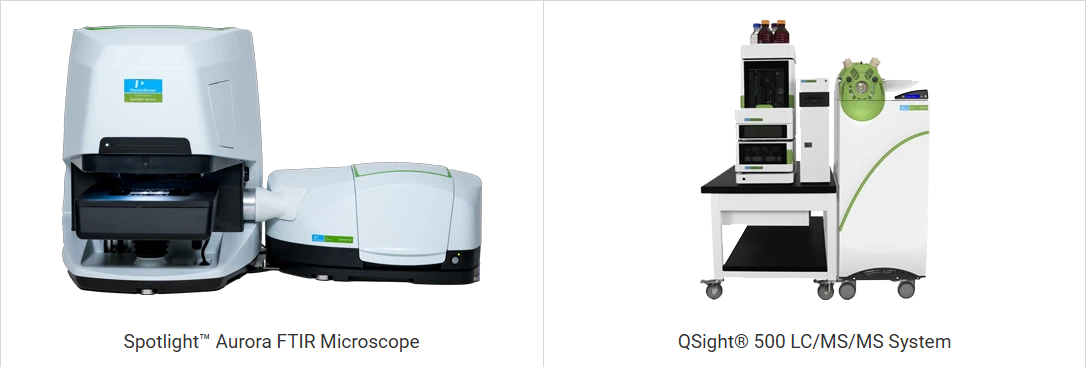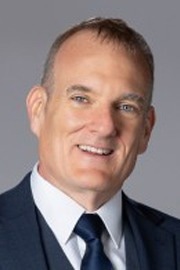Reviewed by Danielle Ellis, B.Sc.Jul 1 2025
In this interview, Dominic Gostik, the CTO of PerkinElmer, discusses the launch of its newest products, QSight® and Spotlight Aurora.
Can you tell us about your scientific background and how you became the CTO of PerkinElmer?
Many people can usually tell from my accent that I didn’t grow up in the United States (US). I was born and educated in the United Kingdom (UK), specifically in England, in a small town called Rugby.
I did my undergraduate studies at Cardiff University and completed my Ph.D. at the University of Sheffield. I began my career in the UK at a mass spectrometry company called Micromass. After spending some time there, I moved to the US and joined another mass spectrometry company, where I spent many years as it went through several name changes.
About 18 months ago, I joined PerkinElmer shortly after the carve-out. It’s been an interesting transition, especially since many of the products here differ quite a bit from what I was used to in mass spectrometry.
PerkinElmer offers a wide range of technologies, including thermal analysis, spectroscopy, atomic spectroscopy, and chromatography platforms like GC and LC. Its broad and R&D-focused portfolio makes it an exciting place to work. I really enjoy leading the team here.
Why did you decide to attend Pittcon 2025?
I’m here for two main reasons. First and foremost, we’re launching some new products, which is really exciting. In addition, Pittcon is a great opportunity to connect with our customers, network with others in the field, and stay up to date on the latest trends and developments in the market.
Can you tell us more about the products you are launching at Pittcon?
Yes, so we’re launching one product and previewing another. Today's official launch is the QSight® 500, a new LC-MS instrument in our QSight range. It’s the highest-performing model in that lineup.

Image Credit: PerkinElmer
What sets this instrument apart is its extremely robust and reliable front end, which allows users to significantly reduce—or even eliminate—some of the tedious, long-term sample preparation typically required before LC-MS analysis.
Having worked in LC-MS for a few decades, I’m very familiar with the labor-intensive sample prep methods customers often rely on, from liquid-liquid to solid-phase extractions. These approaches are not only time-consuming but also costly in terms of reagents, consumables, and labor.
Customers consistently say that they want to bypass extensive prep and inject samples directly into the mass spectrometer. Our R&D team in Woodbridge, Ontario, has developed a highly robust front-end system that can tolerate contaminants that would typically compromise the performance of a high-end triple quadrupole instrument.
This is especially important for applications like environmental contaminant analysis, where samples often contain high background noise or impurities that can degrade instrument performance. This new front-end interface, designed to bridge the liquid and vacuum environments, allows us to handle these complex samples more effectively.
One of our collaborators demonstrated this concept by blending a food sample and injecting it directly into the instrument. This has major implications for food safety testing, where labs need to detect pesticide residues, hormone additives, and antibiotics at trace levels. By simply blending a food item—like a tomato or a pickle—and injecting it directly, users can rapidly and accurately identify contaminants to ensure food safety.
Read the Full QSight® Release
You mentioned food analysis, but are there other sectors where this instrument could be used?
Yes, it has a broad range of applications, but we primarily focus on areas where users work with what we call "dirty" or complex samples. This includes environmental applications, such as sewage effluent treatment and contaminated groundwater analysis. While tap water may not require this level of analysis, these more challenging environmental samples benefit from the instrument’s capabilities.
In addition, there are potential applications in clinical research where samples like body fluids or blood may require small-molecule quantification. These types of complex samples align well with the instrument’s strengths.
We are also showcasing our new Spotlight™ Aurora instrument. This is a preview, allowing us to introduce the product to customers and the market in advance of its full launch. This instrument is primarily focused on the analysis of microplastics.
Spotlight™ Aurora is an infrared microscope that first captures an optical image of the sample. Then, we can focus on specific areas to obtain an IR spectrum from those regions. In the field of microplastics research, for example, this allows users to analyze the accumulation of microplastics in a sample—such as a tissue slice—and identify the types of plastics present in a particular area of the body.
While IR microscopy has a broad range of applications, from pharmaceutical research and characterization to industrial uses like analyzing laminates in wood and other materials, this system is designed with usability in mind. Our goal is to make it simple to operate while ensuring that IR microscopy remains accessible and valuable to our customers.
Have any technological advancements at PerkinElmer contributed to the development of these two products?
Yes, definitely. For the LC-MS, specifically the Triple Quad, one of our main areas of focus has been the source interface. Our goal was to deliver high sensitivity, precision, and quantitation—while also ensuring long operational uptime without requiring customers to deal with excessive downtime or labor-intensive sample preparation. That’s been a major priority for us.
Innovating LC-MS: Dominic Gostik on PerkinElmer’s Breakthrough Technologies at Pittcon 2025
For the IR microscope, we’ve focused heavily on usability. IR microscopy has traditionally been a highly specialized technique, but we’re working to make it much more accessible. By simplifying the operation, we’re allowing users who aren’t experts in the field to take full advantage of high-performance instrumentation.
Are there any industry or technological trends that PerkinElmer is focused on at the moment?
From a macro perspective, we see significant interest in the pharmaceutical and biopharmaceutical sectors, so we continue to focus on that area. Within the PerkinElmer platform, we have Covaris products, which are used for next-generation sequencing sample preparation. This is a key area for biopharma applications.
Additionally, our OneSource business is dedicated to providing customers with services and asset management. The goal is to give researchers more time to focus on their work by handling tasks that would otherwise take them away from their research. Through OneSource, we help optimize laboratory operations, ultimately giving hours back to our customers.
AI and automation are trending topics across all industries. How is PerkinElmer using AI, or how do you plan to implement it in the future?
AI is a major topic in today’s world, and we recognize its importance. We have invested through our R&D teams to explore how we can effectively deploy AI for our customers.

Image Credit: Vladimka production/Shutterstock.com
One of our key focuses is ensuring that AI is both usable and reliable. We want to ensure that the results our customers obtain from AI are accurate and precise without being prone to issues like hallucinations. To achieve this, we have been addressing some of the fundamental challenges our customers face, such as instrument operation, optimization, and method development.
Looking ahead, we anticipate being in a position over the coming months and quarters to start deploying AI tools that solve real-world problems for our customers. With so many AI tools available, it is important to identify the ones that best serve our customers’ needs. As we move forward, we will continue leveraging machine learning algorithms to address these challenges effectively.
You mentioned the R&D team earlier. What does the future hold for R&D at PerkinElmer?
PerkinElmer has a long history of innovation—we introduced the original gas chromatography system back in the 1950s. However, when I stepped into the role of Chief Technology Officer, I wanted to focus on refreshing and advancing our technologies.
Over the past 12 months, we have launched multiple new products, including the ones we are introducing now. But there is more to come. Over the next 24 months, we will continue with a significant number of product launches, all aimed at solving real customer problems. Our goal is to enhance PerkinElmer’s relevance by focusing on the specific applications our customers are working on and addressing their needs.
Many of our customers operate in environments where time and cost are critical factors. While high performance is always a priority, it must be accompanied by robustness, reliability, uptime, scalability, and reproducibility—both from sample to sample and instrument to instrument. These are the concerns we hear from our customers every day, and we are designing our R&D efforts to address them.
Laboratory efficiency goes hand in hand with sustainability. We are actively working to make our instruments more efficient, which also makes them more sustainable. For example, we are exploring ways to reduce the amount of argon used in our plasmas and lower the power consumption of our instruments.
A recent example is the introduction of the ICP-MS single quad last year, which featured a new cooling system called GreenCT. This system achieves 95 % cooling efficiency compared to a traditional chiller, improving laboratory efficiency while reducing the carbon footprint of our instruments.
I imagine you have already spoken with a few customers at Pittcon. How important is Pittcon for engaging with existing customers and attracting new ones?
Pittcon is a historic event, and this year is especially exciting as it’s being held in Boston for the first time. That’s brought in a new audience, giving us the chance to connect with new people while also networking with our existing customers and suppliers. It’s a great venue for us.
Attending Pittcon is an important part of PerkinElmer’s annual calendar. We often use this event to launch new products, so it serves as a key platform for us. One thing that really sets Pittcon apart from other conferences is the amount of dedicated networking time.
Some industry events don’t offer as many opportunities for direct engagement with customers, but Pittcon does—and we truly value that. It’s an excellent opportunity to strengthen existing relationships and, ideally, form new ones.
About Dominic Gostik
Dr. Dominic Gostick is the Chief Technology Officer (CTO) at PerkinElmer, a global leader in analytical and diagnostic solutions. He joined the company in August 2023, bringing over two decades of experience in analytical technologies.
Prior to his role at PerkinElmer, Dr. Gostick spent nearly 20 years at SCIEX, a Danaher Company, where he held various global leadership positions, including Vice President of Product Management, Interim Chief Technology Officer, and Vice President & General Manager of the LC/MS Business. Earlier in his career, he worked as a Product Manager at Waters Corporation. 
Dr. Gostick earned his Bachelor of Science in Biotechnology from Cardiff University and completed his Ph.D. in Molecular Biology at the University of Sheffield.
At PerkinElmer, Dr. Gostick leads the company's research and development efforts, focusing on advancing analytical technologies to meet the evolving needs of scientific communities. His extensive experience in product management and technological innovation plays a crucial role in driving PerkinElmer's mission to innovate for a healthier world.

This information has been sourced, reviewed and adapted from materials provided by Pittcon.
For more information on this source, please visit Pittcon.
Disclaimer: The views expressed here are those of the interviewee and do not necessarily represent the views of AZoM.com Limited (T/A) AZoNetwork, the owner and operator of this website. This disclaimer forms part of the Terms and Conditions of use of this website.